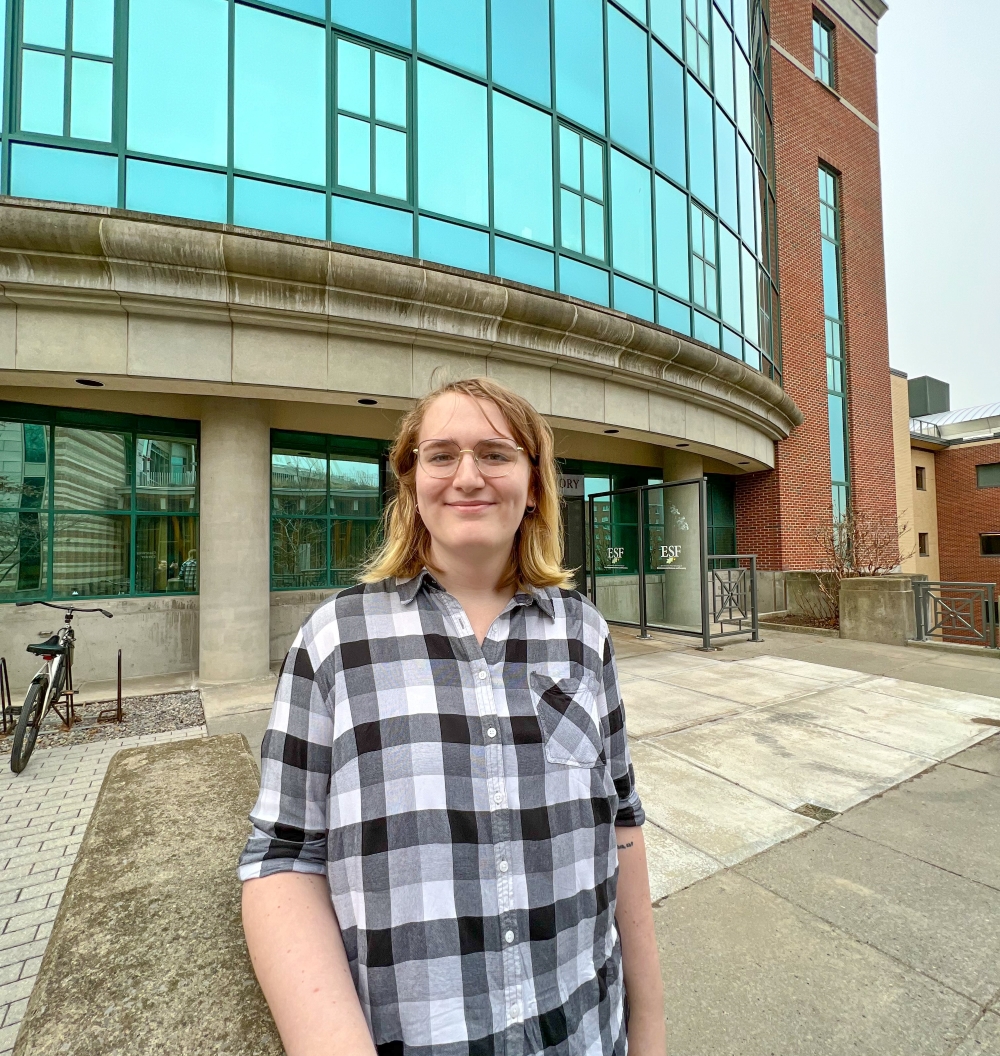Recent Headlines

Lyra Sauer
Mighty Oak Monday: Lyra Sauer
Major: Chemistry
Concentration: Environmental Chemistry
Hometown: Bellport, New York
Class of ’23
Lyra Sauer’s best adolescent memories are stargazing and cloud gazing. Her mother,
a high school earth science teacher, would teach her the scientific names for clouds
and how to navigate using only the stars in the sky. Little did Sauer know she would
one day look to the skies once again to study the mysteries of the atmosphere.
Sauer’s scientific interests evolved over time – from meteorology to environmental engineering – until eventually landing on chemistry during her freshman year at ESF.
“We quickly got into research, hands-on experiments, and complicated chemical problems,” Sauer said. “I learned over time that was something unique to ESF. It was challenging work, but very rewarding.”
She excelled and ESF professors took note. One day she received an email from Dr. Ted Dibble asking her to come work for him on atmospheric chemistry research. She jumped at the opportunity to help examine the potential reactions and long-term implications of a commonly used fertilizer chemical in the atmosphere.
Digging into the research instantly both delighted and alarmed her at the same time. It was a momentous first step toward her career as a scientist, but the results she was uncovering concerned her. The problem: a chemical in the fertilizer well known for waterway contamination was found in surprisingly high quantities of gas in Earth’s atmosphere – and no one seemed to know why.
“It feels really powerful looking at things no one has researched before,” Sauer said.
A year later, Dr. Dibble, Sauer, and the scientific community are still working to
understand the effects of the phenomenon. But while the results of the research are
still emerging, the effects on Sauer’s future are clear.
Her time studying under Dr. Dibble solidified her passion for chemistry and inspired
her to pursue a PhD in chemistry from Cornell University in the fall. Her goal is
to become a college professor and researcher so she can teach the next generation
of chemists.
“I’m excited to explore more uncharted areas of our scientific knowledge.”
Learn more about ESF’s Chemistry program.